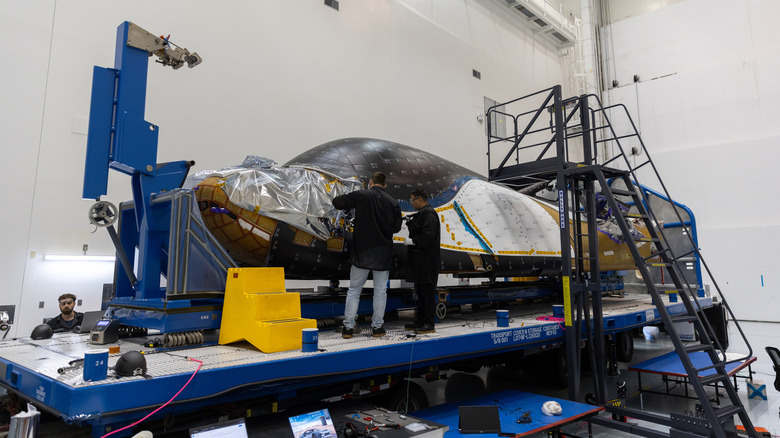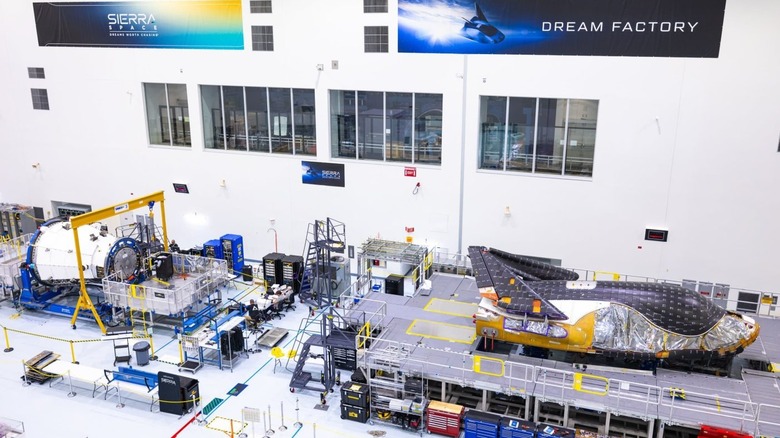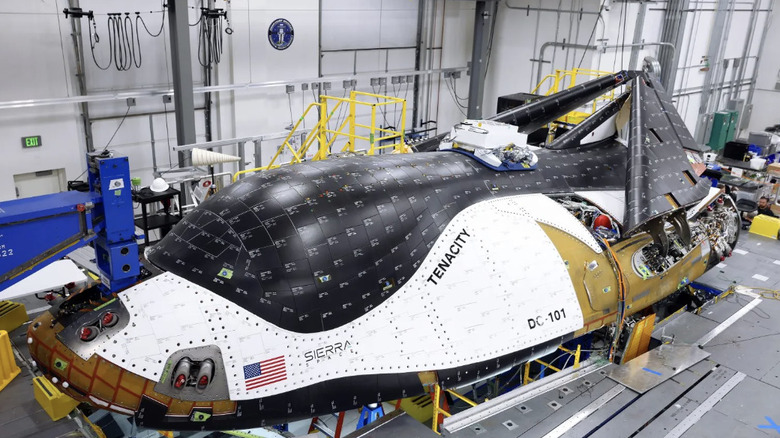NASA's Dream Chaser Will Make Its 2026 Debut As A Free-Flying Spacecraft
NASA's revolutionary new Dream Chaser spaceplane is finally ready to fly, but not in the way it was first intended. The Dream Chaser is on track for its first orbital flight in late 2026, but it won't be heading to the International Space Station (ISS) with supplies. Instead it will take a free demonstration flight to prove it is ready for contracted missions; the test will be a big step forward for a program that has been in the works for nearly a decade. NASA and Sierra Space signed a contract in 2016 for the Dream Chaser spaceplane Tenacity and its companion cargo module Shooting Star to make at least seven supply runs to the ISS. But development proved more complicated than expected, and with the space station now only five years away from retirement it was agreed that a standalone test flight made more sense at this stage.
According to NASA ISS program manager Dana Weigel, if the agency sees Dream Chaser make a successful orbital flight it could indicate a readiness for future supply missions. The revised plan gives Sierra Space the chance to show what Dream Chaser can do while allowing NASA to keep its options open for later flights. "This mutually agreed to decision enables testing and verification to continue on Dream Chaser," Weigel said, "as well as demonstrating the capabilities of the spaceplane for future resupply missions in low Earth orbit."
The Dream Chaser's turbulent road
Dream Chaser has had a long and bumpy road to the launchpad after being initially pitched as a smaller, more efficient successor to NASA's retired space shuttle. The design was intended to provide a fast turnaround and a reliable way to deliver supplies to and haul waste products from the ISS, but the Dream Chaser has faced major technical hurdles.
Sierra Space wrestled with the Dream Chaser's tri-mode propulsion system that switches between different fuel mixes according to what phase of flight the craft is in. Each necessary update meant new testing, certification work, and more development time. While all this was happening, NASA was planning for a future where commercial space stations take over for the ISS. With these developments, multiple planned Dream Chaser supply missions began to make less sense than they did in 2016.
In 2024, the project took an important step. Tenacity successfully completed vibration and environmental testing, proving the craft's structure was nearly ready for space. This promising development led to the new arrangement between NASA and Sierra Space where the craft would conduct a free flight in orbit without the need to link up with the ISS.
A spaceplane built for the future
The 2026 test flight is a pivotal moment for Sierra Space. The company was formed in 2021 when long-time NASA and U.S. military contractor the Sierra Nevada Corporation spun off its space division. The Dream Chaser will be unmanned and controlled from the ground, enabling a compact size of about 15 feet wide by 30 feet long. Flight operators will be able to bring it down on standard runways with a load of just 1.5g, giving it a huge edge over capsule-based spacecraft. The cargo module is designed to be jettisoned and burn on re-entry so the Tenacity spaceplane can be quickly prepped for its next flight.
Sierra Space executive chair Fatih Ozmen says the spaceplane has potential as a tool for defense as well as work in space. Each plane should be able to make more than 15 flights before being replaced, far less than the Space Shuttle's intended useful life of 100 missions. Sierra Space also envisions Dream Chaser supporting future commercial space stations like Orbital Reef and Starlab as NASA transitions away from one of the most important satellite projects in history. Its versatility could make the Dream Chaser essential for the post-ISS era of space exploration, especially as it is refined and improved over time.
NASA hasn't committed to any flights beyond the 2026 test yet, but the agency has left the door open to future contracts if the demonstration goes smoothly. For now, the Dream Chaser's mission is fairly simple: It just has to launch successfully, take a few laps around the globe, and land safely. If all that goes smoothly, this won't be the last we hear of the Sierra Space Dream Chaser.


